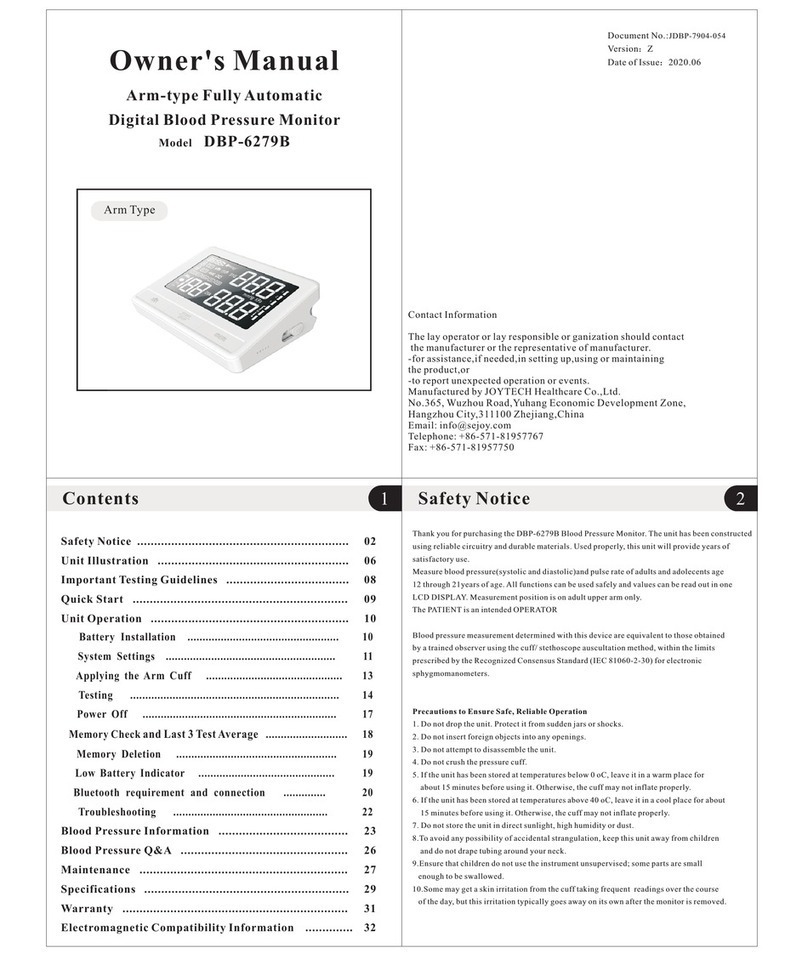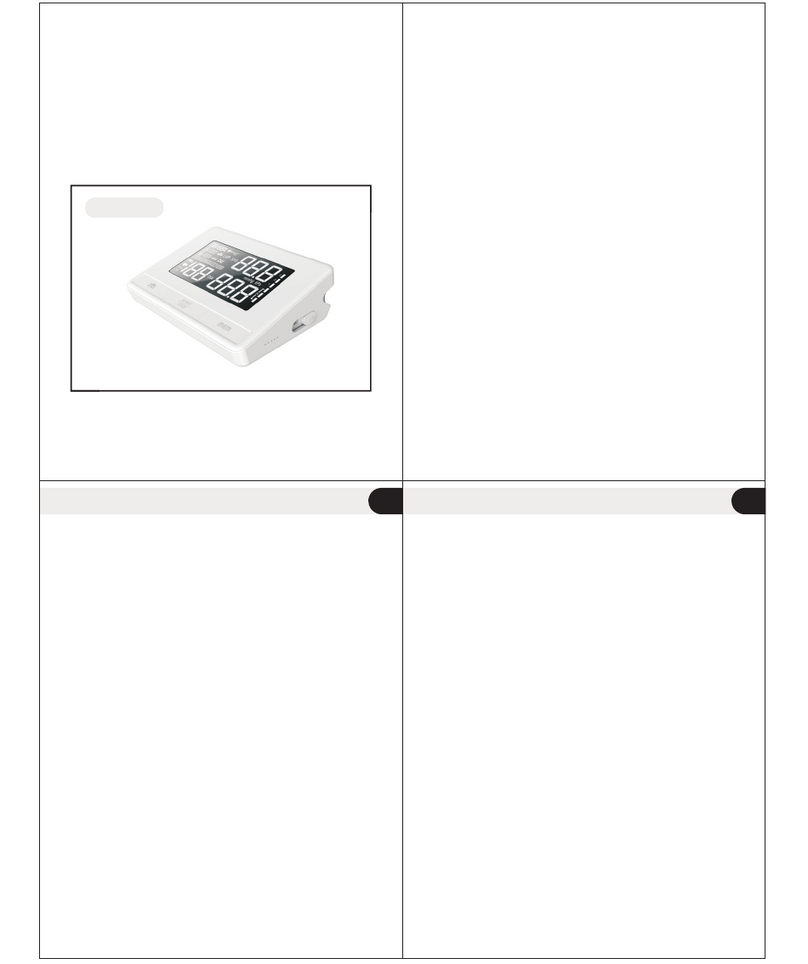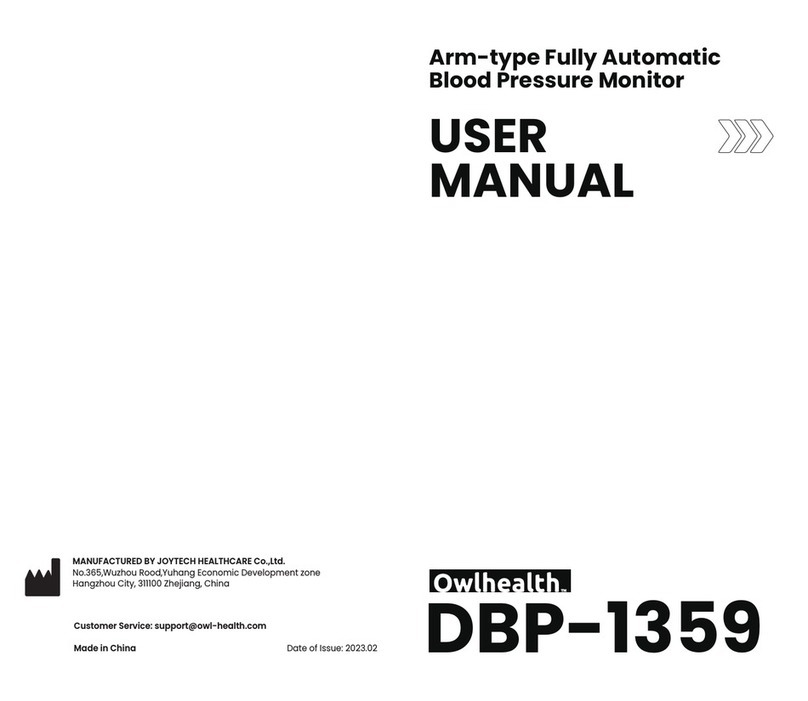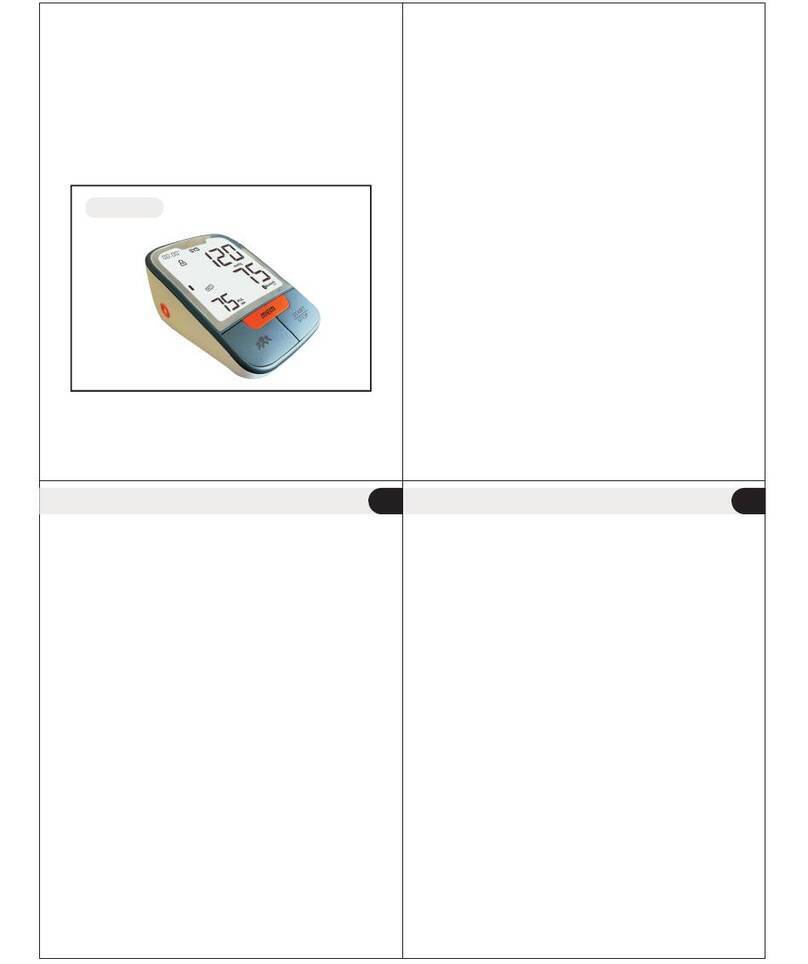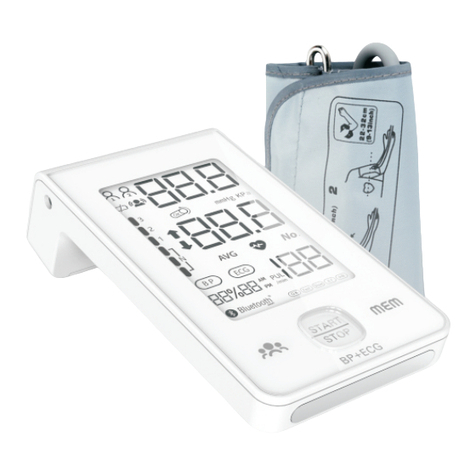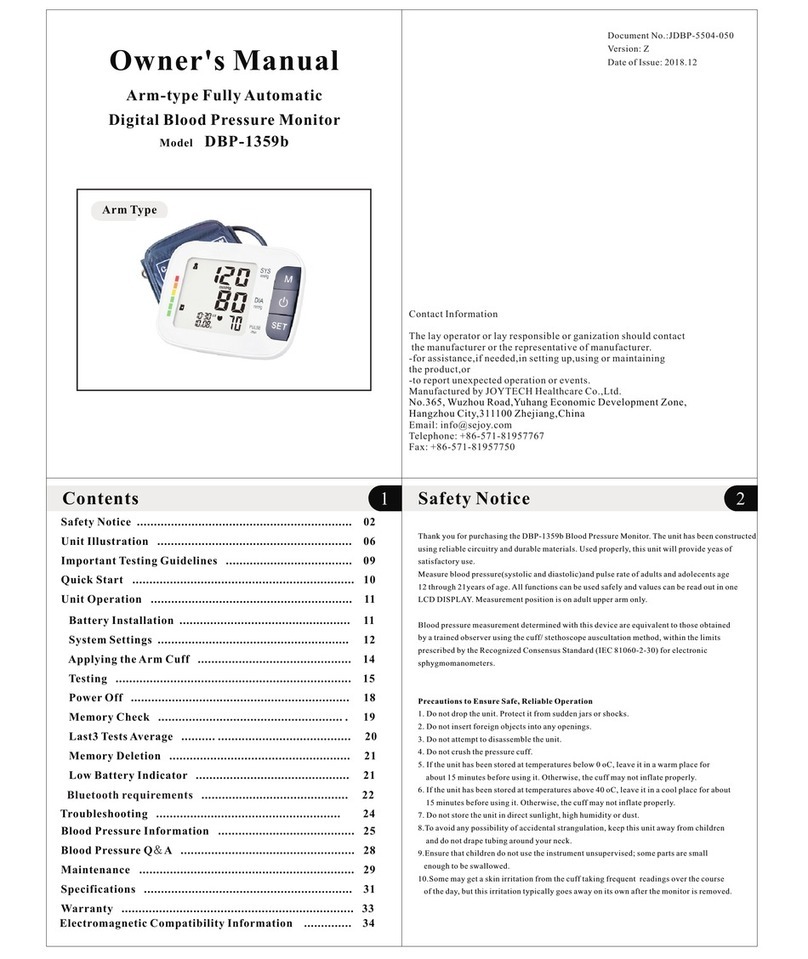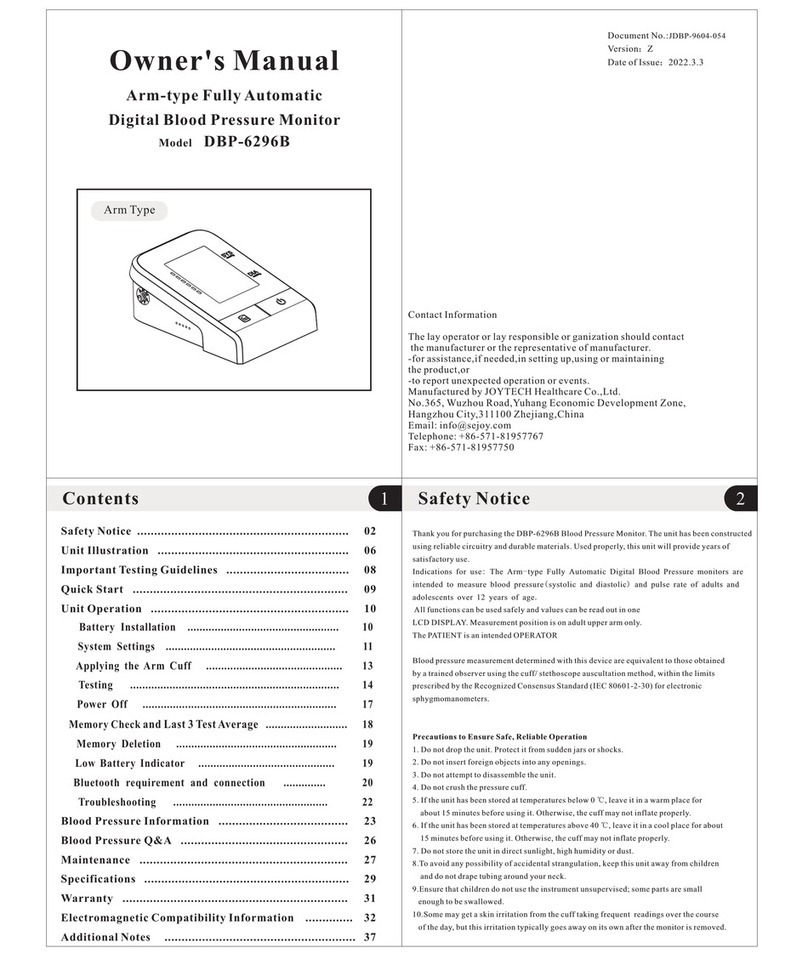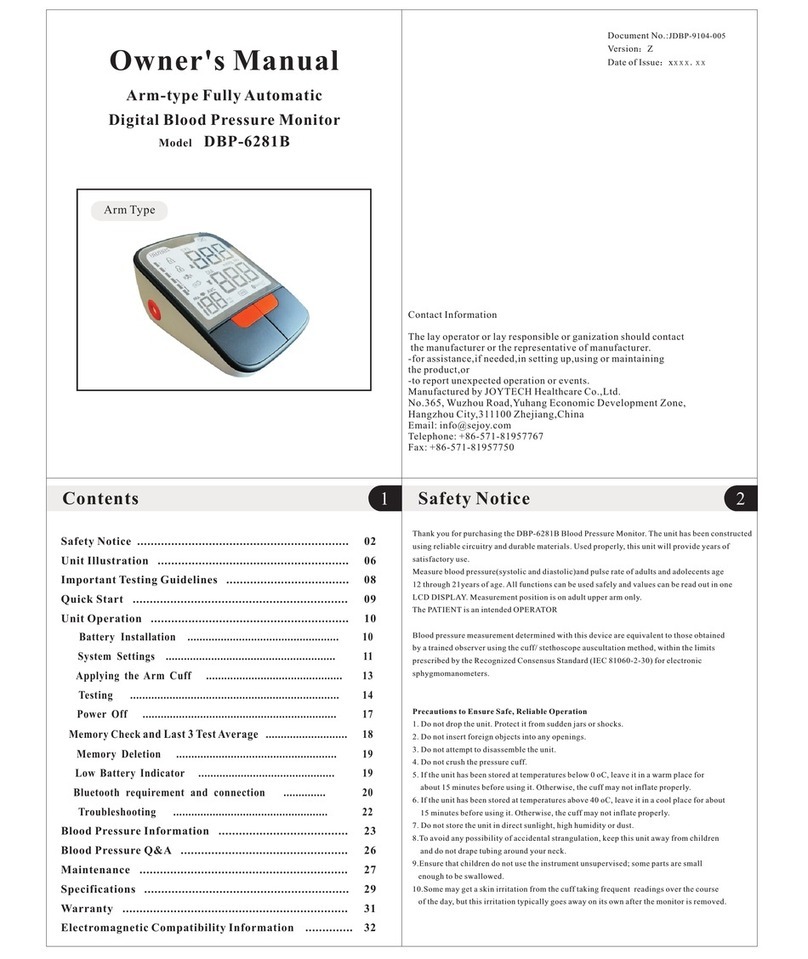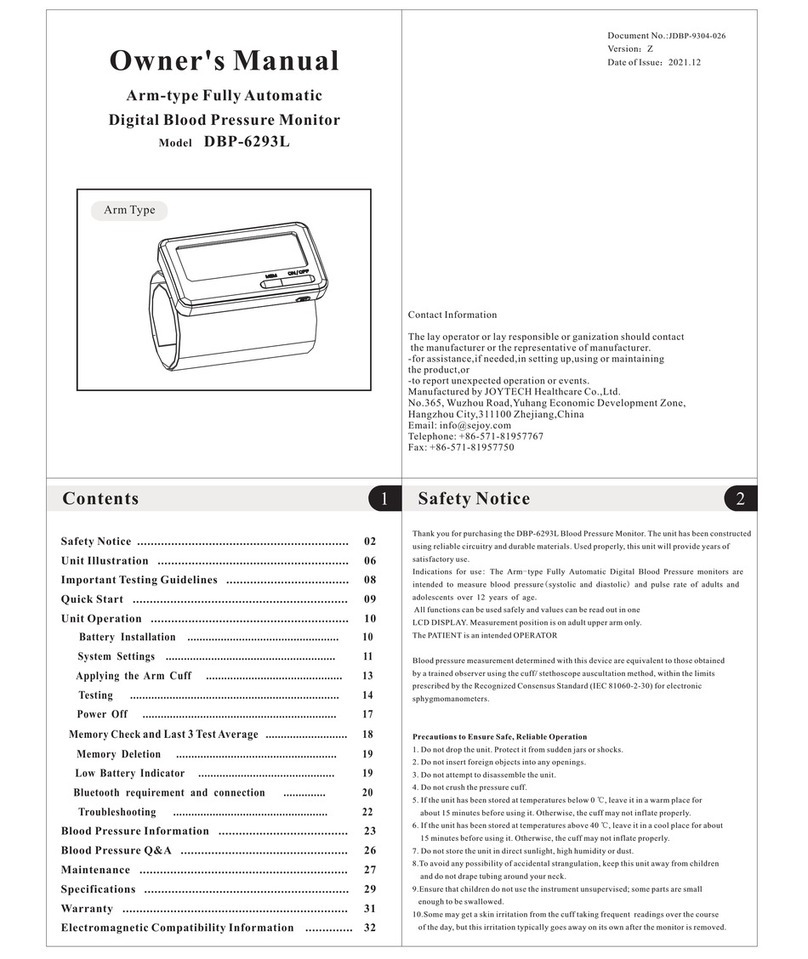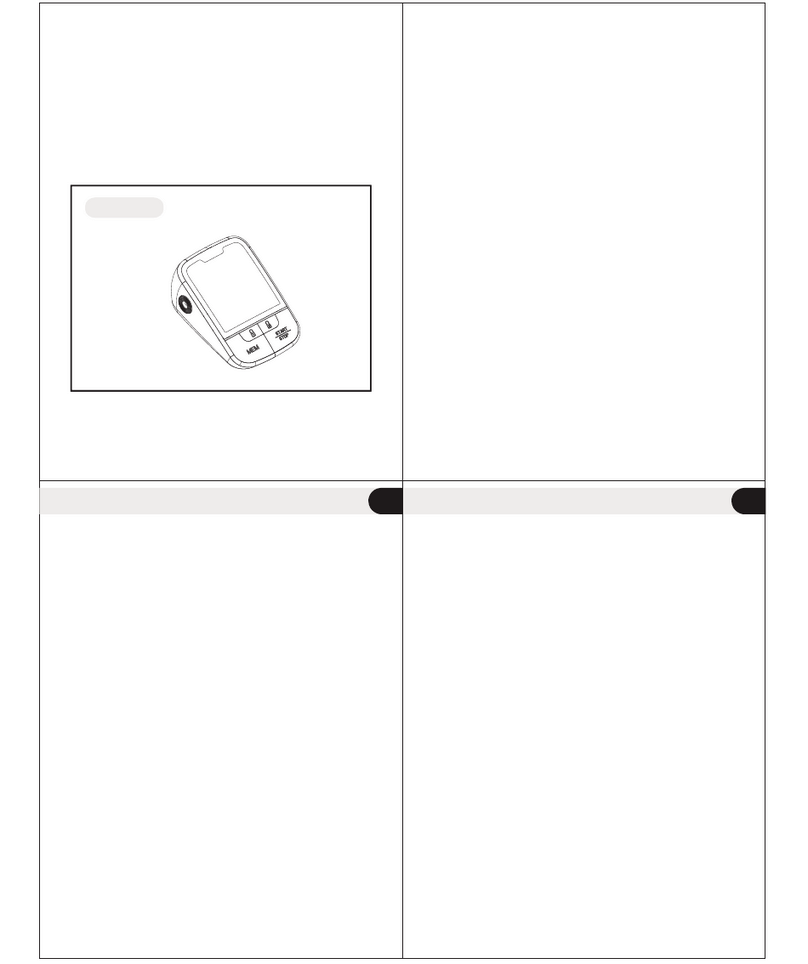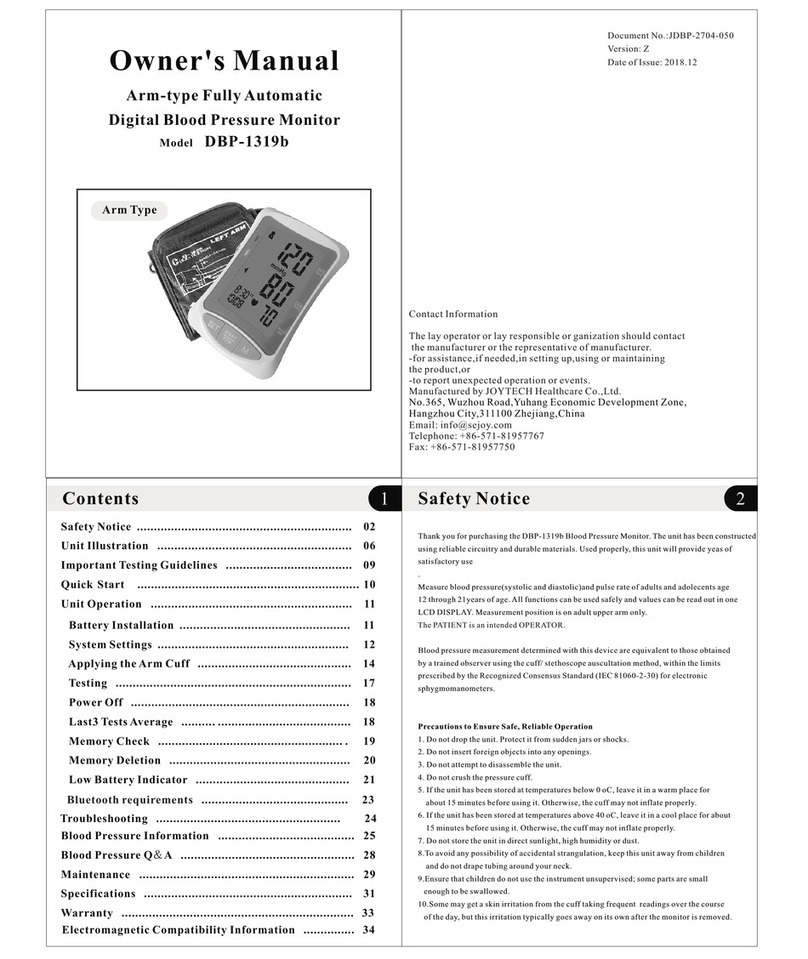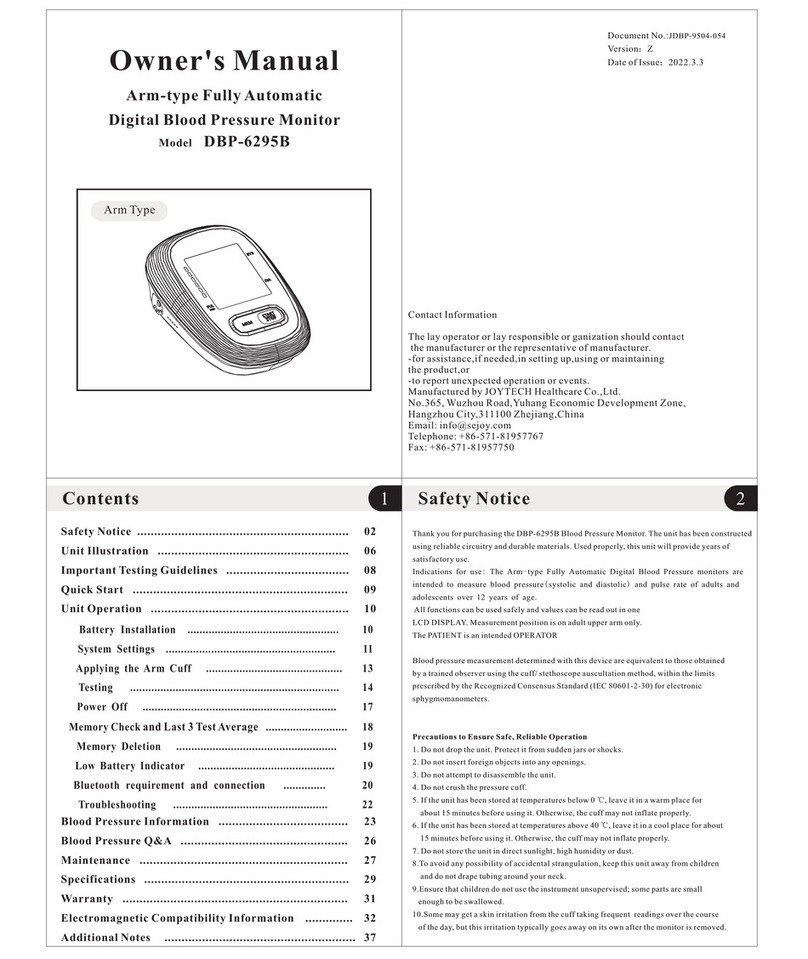
Arm-type Fully Automatic Blood Pressure Monitor DBP-6191
Contents
. SAFETY NOTICE..........................................................................................
. UNIT ILLUSTRATION ..................................................................................
. BLOOD PRESSURE MONITOR DESIGN.......................................................
. Monitor Unit ..........................................................................................
. Arm Cuff.................................................................................................
. Display ...................................................................................................
. IMPORTANT TESTING GUIDELINES............................................................
. QUICK START .............................................................................................
. UNIT OPERATION.......................................................................................
. Battery Installation ...............................................................................
. Medical AC Adapter...............................................................................
. System Settings ....................................................................................
. Applying the Arm Cuff..........................................................................
. Testing ................................................................................................
. Irregular Heartbeat Indicator.............................................................
. Power Off............................................................................................
. Last Tests Average..........................................................................
. Memory Check ...................................................................................
. Memory Deletion...............................................................................
. Low Battery Indicator.........................................................................
. Static Pressure Measurement...........................................................
. Arm Shake Indicator ..........................................................................
. Cuff loose Indicator............................................................................
. Troubleshooting .................................................................................
. BLOOD PRESSURE INFORMATION ..........................................................
. Blood Pressure ...................................................................................
. WHO Blood Pressure Classification Indicator...................................
. Health Reminder................................................................................
. BLOOD PRESSURE Q&A...........................................................................
. MAINTENANCE ........................................................................................
. SPECIFICATIONS ......................................................................................
. ELECTROMAGNETIC COMPATIBILITY INFORMATION ..............................
. ADDITIONAL NOTES ................................................................................
WARRANTY CARD...........................................................................................

